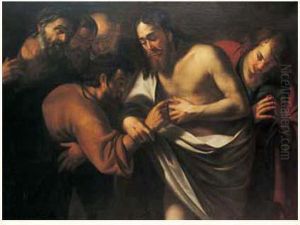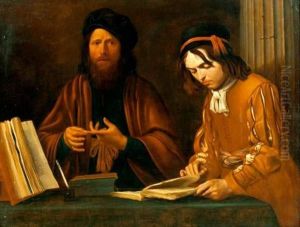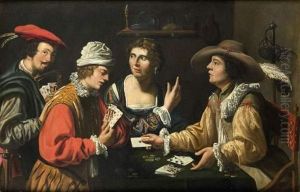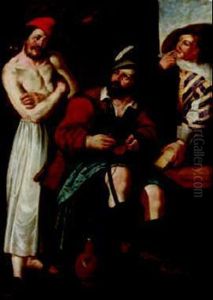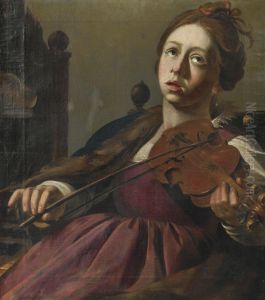Wouter Pietersz. Ii Crabeth Paintings
Wouter Pietersz. II Crabeth was a notable Dutch Golden Age painter, born in 1594 in Gouda, Netherlands. He hailed from a prominent family of artists, with his grandfather Pieter Woutersz being a respected glass painter and his father, Pieter Pietersz Crabeth, also being involved in the arts. Wouter had a brother, Dirck Pietersz Crabeth, who was equally skilled in painting. This familial background deeply influenced Wouter's career choice and development as an artist. The Crabeth family was synonymous with artistic achievement in Gouda, particularly known for their contributions to the stained glass windows of the famous Sint Janskerk in Gouda.
Wouter Pietersz. II Crabeth's early life was marked by his apprenticeship in the family's workshop, where he learned the intricacies of painting and glassmaking. Despite the prominence of glass painting in his family, Wouter showed a stronger inclination towards oil painting. His works predominantly featured religious themes, portraits, and scenes from daily life, capturing the essence of Dutch Golden Age painting with meticulous detail and vibrant colors. Unlike his ancestors, who were famous for their work in stained glass, Wouter made his mark with his distinctive style in oil painting.
Though much of Crabeth's life details and the extent of his oeuvre remain shrouded in mystery, historical records indicate that he was an active member of the Guild of Saint Luke in Gouda, which was a common practice among artists of his time for professional development and networking. His membership in the guild suggests that he was a respected figure within the local art community.
Wouter Pietersz. II Crabeth died in 1644 in Gouda. Despite his death, his legacy lived on through his contributions to Dutch art, particularly in the context of the Golden Age. His works are preserved in various museums and collections, serving as a testament to his skill and the artistic heritage of the Crabeth family. His contributions, though not as widely recognized as some of his contemporaries, remain an essential part of the study of Dutch Golden Age painting, illustrating the diversity and depth of talent during this flourishing period of art history.
